Let’s start with a tree, that is native mostly to south-central Ohio, namely the Yellow Birch, Betula Alleghaniensis. According to the book “Betula alleghaniensis Britton yellow birch“ by Scotia, Nova, and Anticosti Island, the Yellow Birch, is among the largest of birches, as it grows to 30 meters (100 feet). It is an ornamental shade tree, that can be easily distinguished from other Brichs by looking at its bark. If we look closely, we can see an amber-yellow to silvery yellow-gray bark that peels off in thin curls. The tree prefers a cool climate where the soil is wet and sandy. For example, they can often be found growing amidst balsam fir trees.
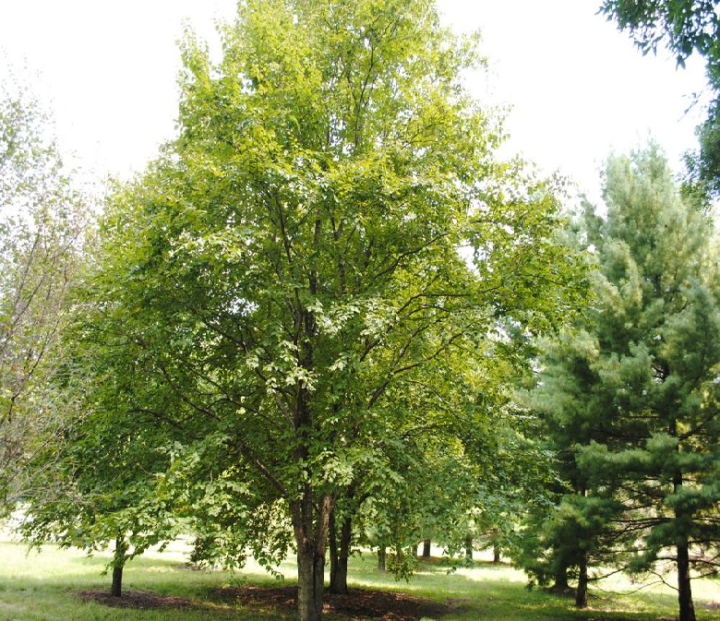
If we zoom in on the picture we can see that the leaves have an alternate leaf arrangement where a single leaf is attached at each node. Furthermore, the leaves are simple elliptical with an acute tip and serrated edges.
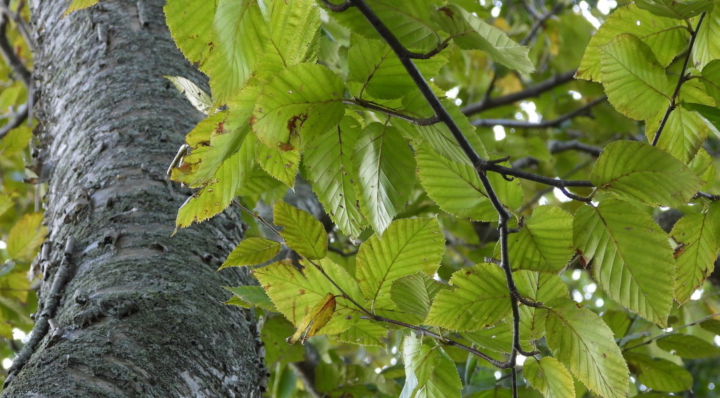
Next, let’s move to a more colorful tree, the Red Maple, Acer Rubrum. It is a medium to a large deciduous tree that was interestingly named for its distinctive red fall leaves, fruits, flowers, and twigs. According to the Acer rubrum L. Red maple by Walters, et.al the Red maples are native to the eastern forest, however, they grow on diverse sites, from dry ridges and southwest slopes to swarms. What is more, they can easily grow under extreme soil moisture conditions including wet or dry soil. Its leaves are about 3-4 inches in length, with three to five pointed lobes that have serrated edges. These leaves are simple and arranged oppositely on a twig. To distinguish this tree from other maples, we need to look at its leaves which for instance are more toothed than any other maples.

Let’s talk about a tree that comes from the legume family. The Black Locust, Robinia pseudoacacia has the ability to grow new branches by sprouting new roots and shoots. Pretty interesting, huh. The tree not only grows with a single leader but it has thorns that can be found on the trunk or branches. According to Alilla, Roberta, et al. the Black Locust grows naturally on a wide range of sites but does best on rich moist limestone soils. It lives in a broad range of forest types and conditions within its native range. It has compound alternate leaves, that have entire edges. Many people tend not to distinguish Black Locust from Honey Locust. One significant difference between the two trees is that the Black Locust puts out large, showy scented flowers while the Honey Locust is small.
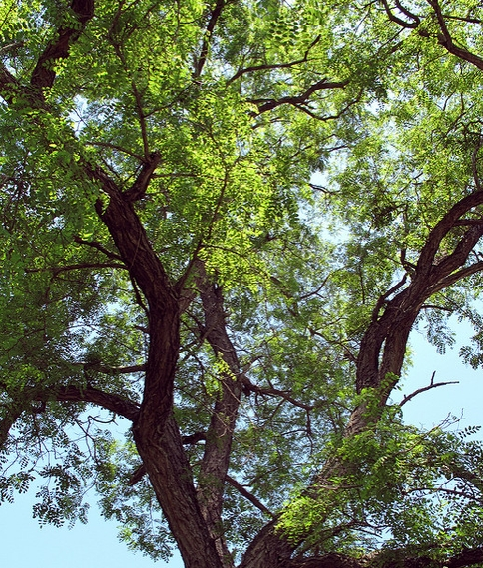
Moving on to the next tree, the Silver Maple, Acer saccharinum, it is a wet site tree that is found throughout all of Ohio, and is most commonly found in urban areas. Due to its vigorous root system, it tolerates a wide range of soil conditions. The Silver Maple has a simple palmate veined and lobed leaf arrangement with deep sinuses. These leaves are opposite and palmately lobed with five lobes. It has a broad, rounded crown, and the bark of younger branches will be smooth and vary in color from reddish to yellow-gray. It is distinct from the other maples that have a long grey flat and relatively thin texture to it. According to the Acer saccharinum L. Silver maple by Gabriel, William J, this tree is a very fast-growing tree that may live 100-plus years. Further studies suggest that its height increases by more than 24 inches per year. Here is a picture of this amazing tree:
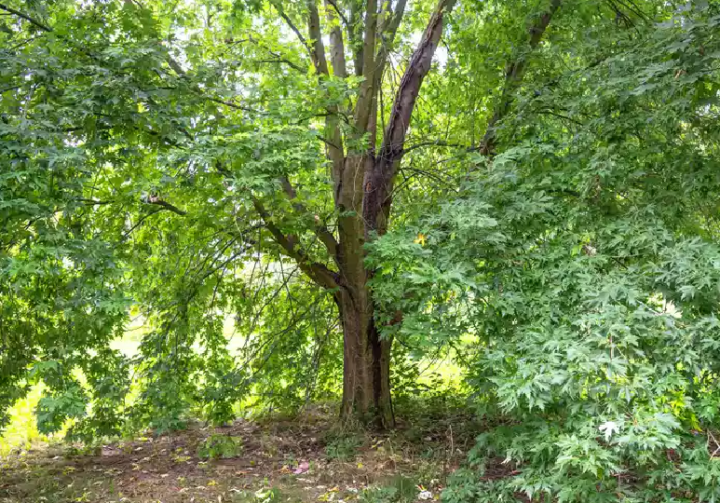
Next, let’s talk about the, American Persimmon (Diospyros virginiana) which is native to the eastern United States. This tree is primarily known for its ripened as it is providing food for both animals and humans. Interestingly, in the article “Antioxidant activities and phenolic compounds in fruits of various genotypes of American persimmon Diospyros virginiana L.“Briand C. H talks about how Native Americans used to make alcoholic beverages, pudding, and medications. I found this information very interesting because I read in the “Tree Blindness” by Gabriel Popkin that people nowadays are so used to eating domesticated plants and the idea of eating wild trees seems strange and primitive. The Persimmon tree grows in a tremendous range of conditions. For example, very dry, sterile, sandy woodlands, river bottoms, and rocky hillsides, people can even see them in moist or very dry locations. A distinguishing factor from other trees is alternate, simple, deciduous leaves with serrate margins.
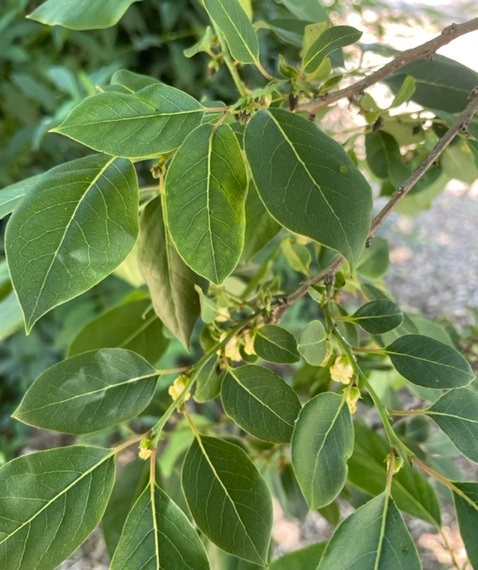
The Black Tupelo, Nyssa sylvatica, one of the most attractive native trees around. The book “Nyssa sylvatica Marsh. black tupelo” by Tupelo Black talks about the appearance of the tree. It is native to the entire Eastern United States and is found in all of Ohio except for the driest counties in the state. Its habitat includes acidic well-drained and light-textured soils. Since it is poorly-drained soil and drought tolerant it can be found in a variety of climates with a wide range of temperatures. In the summer its leaves are dark green with a high-gloss appearance, but the most spectacular part of this tree is the fall foliage with many shades of yellow, orange, and red. The Black Tupelo’s bark matures to medium gray and resembles alligator hide. It’s fruit is bluish black and is loved by many birds. It produces leaves with smooth leaf margins, its leaves are simple, elliptical, and arranged alternately along the stems. Here is a picture of the Black Tupelo’s bark:
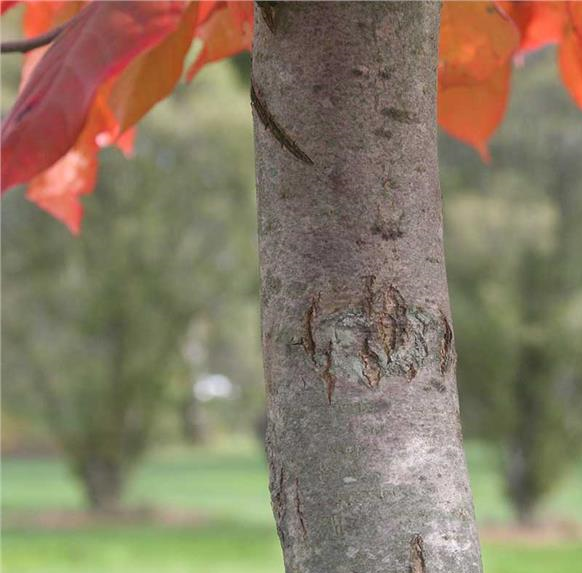
Bigtooth Aspen, Populus grandidentata, is a short-lived tree that is fast growing, and medium-sized, and it is often a primary invader if sites that have been cleared or burned. The Bigtooth Aspen has a light, smooth bark, tan to yellowish or greenish gray. Furthermore, the bark often has an orange cast. Its leaves are alternate and simple with a flat leaf stalk. Its blade is around 2 to 4 inches long. I found this interesting article namely, “Populus grandidentata Michx. bigtooth aspen” by Laidly, Paul R. which talks about the Bigtooth Aspen’s preference regarding its habitat. It is most abundant on sands, loamy sands, and light sandy loams, but it is found as a single tree or minor stand component on any soil, from rock outcrops to heavy clays. Bigtooth Aspen can be found in a wide range of climates including the marine climate and the continental climate. Especially, where the summers are humid and moisture is adequate in all seasons.
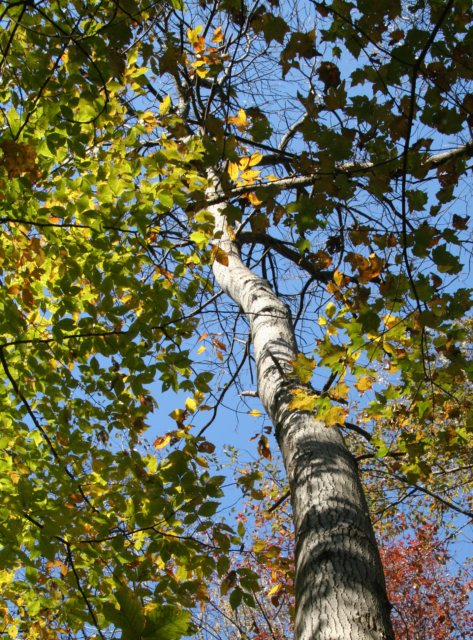
Last but not least, let’s talk about the Buckeye tree, Aesculus Glabra, which is the official state tree of Ohio. The tree usually grows to a height of 40 feet tall and bears cone-shaped clusters of yellow-green flowers. The bark is gray and rough, becoming flaky as the tree ages. The bright green, palmately compound leaves, are oppositely arranged. Its petiole is long and the leaf margin of the leaflets is striated. The buckeye is a moist-site tree and is most frequently found along river bottoms and along the margins of old fields. We can most likely find these trees in moist and warm climates. The article “Frost damage and its cascading negative effects on Aesculus glabra” Augspurger, Carol K investigated the negative impacts that late spring frost causes on the Buckeye trees. This particular research was important to be conducted because we gained a better understanding of the ecological and evolutionary importance of these processes. Overall, I think it is important for us to recognize that trees can tell us how well we are managing our environment.

